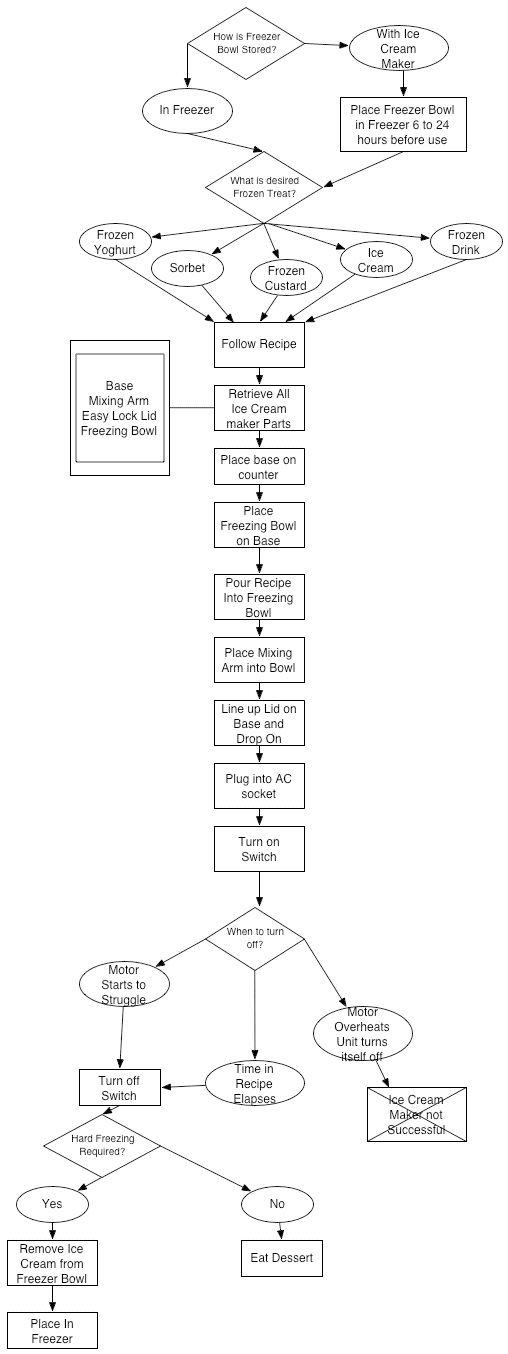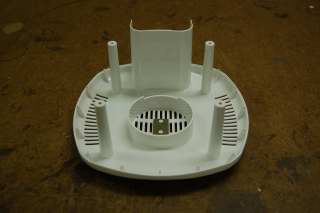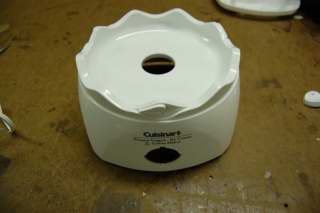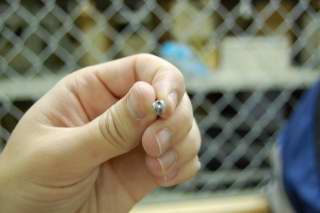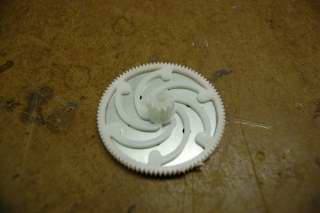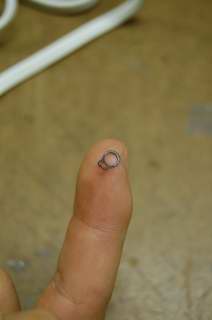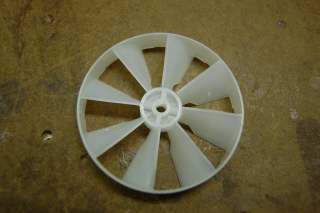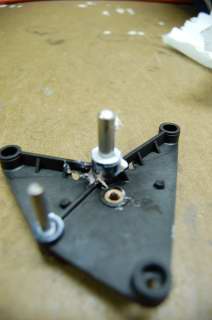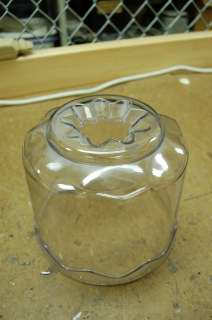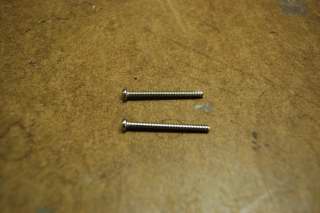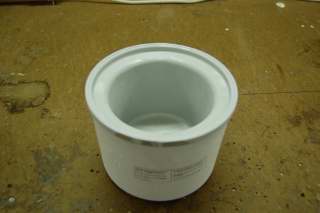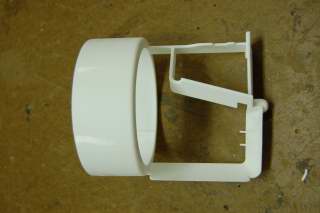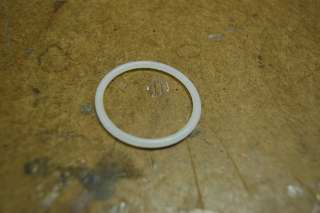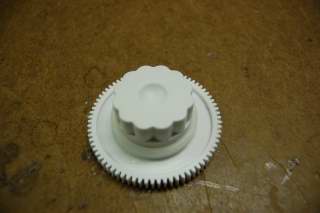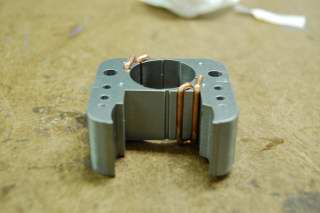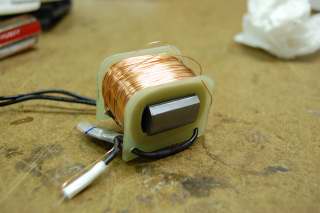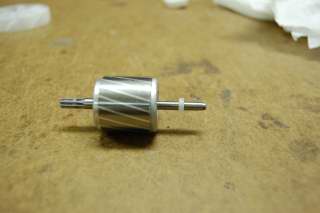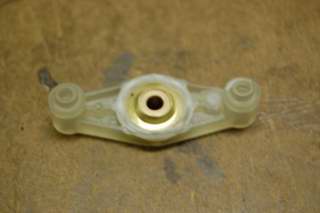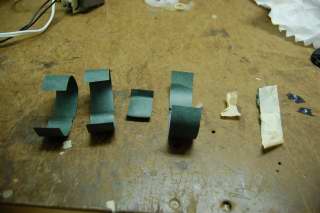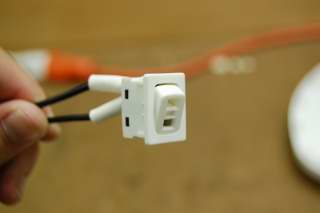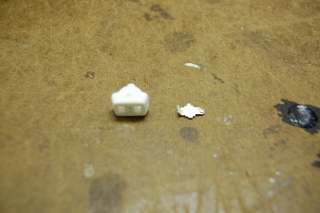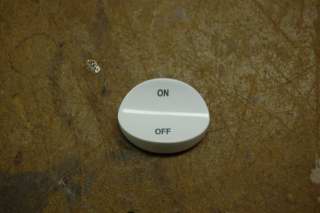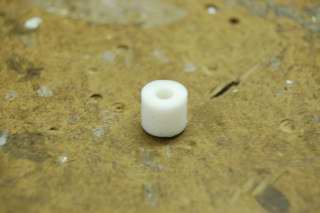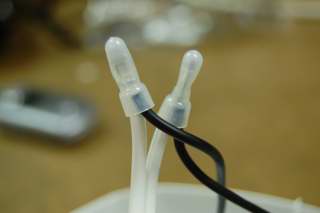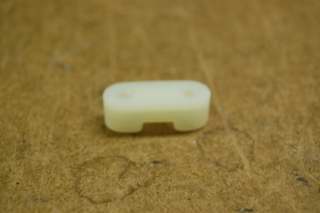Ice cream maker
From DDL Wiki
(→Transportation) |
(→Transportation) |
||
| Line 172: | Line 172: | ||
This type of product is largely shipped using truck transportation, which is a huge contributor to greenhouse gas emissions. Switching over to a purchaser price model of the production system causes a 45.9% increase in the amount of economic activity in the truck transportation sector. This increase is due to the after production shipping, the transportation of the product to the retail location. The GWP emissions only move by about 30 CO2 equivalents when the shipping to retail is considered. This amount is less significant when compared to the total GWP emissions for production which is around 600 CO2 equivalents. | This type of product is largely shipped using truck transportation, which is a huge contributor to greenhouse gas emissions. Switching over to a purchaser price model of the production system causes a 45.9% increase in the amount of economic activity in the truck transportation sector. This increase is due to the after production shipping, the transportation of the product to the retail location. The GWP emissions only move by about 30 CO2 equivalents when the shipping to retail is considered. This amount is less significant when compared to the total GWP emissions for production which is around 600 CO2 equivalents. | ||
| - | The mode of shipment of this product is primary through ground shipping, which is a major contributer to greenhouse gas emissions. If you switch over to a purchaser price model of the production system, this causes a 45.9% increase in the economic activity for the truck transportation sector. This increase is due to shipping after production, which is the emissions of the trucks from the manufacturer to the retail location. When this shipping is considered, the GWP emissions increase only by 30 CO2 equivalents. This amount is insignificant compared to the total GWP emissions, which is about 600 CO2 equivalents. | + | (The mode of shipment of this product is primary through ground shipping, which is a major contributer to greenhouse gas emissions. If you switch over to a purchaser price model of the production system, this causes a 45.9% increase in the economic activity for the truck transportation sector. This increase is due to shipping after production, which is the emissions of the trucks from the manufacturer to the retail location. When this shipping is considered, the GWP emissions increase only by 30 CO2 equivalents. This amount is insignificant compared to the total GWP emissions, which is about 600 CO2 equivalents.) |
== Use == | == Use == | ||
Revision as of 23:57, 23 September 2007
Contents |
Component List
Failure Mode and Effects Analysis
This chart shows the top failure modes of the ice cream/sorbet maker. This is a risk assessment of the major parts of the device and how each failure ranks on a priority list. The failures are recorded in a few categories, which are severity, occurrence, and detection. The severity of the failure is a value that represents how crucial this part or action is to the usage of the product. The occurrence represents how often the failure occurs per 10,000 products. The detection represents how easily the failure mode can be detected, either in the assembly line process or by the user. Here is our FMEA of our ice cream maker. After the table, some of the values will be explained in further detail.
| Item & Function | Failure Mode | Effects of Failure | S | Causes of Failure | O | Design Controls | D | RPN | Recommended Actions | Responsibility & Deadline | Actions Taken | S* | O* | D* | RPN* |
|---|---|---|---|---|---|---|---|---|---|---|---|---|---|---|---|
Motor
| Electrical failures: Motor may overheat and fail | Product will not mix the ice cream, and the product may not have good consistency. | 8 | Motor may overheat when the ice cream starts solidifying. The increased viscosity of the ice cream may add too much torque on the motor. | 6 | Testing with different types of ice cream and find the point when the load applied is too high | 5 | 240 | Find a controller that will turn off the motor once the torque applied to the motor gets too high | Motor Manufacturer | Integrate a current sensor into the design | 8 | 1 | 5 | 40 |
| Mechanical Failure: Gear train may strip | The rotation of the motor will not be transferred to the product | 8 | The increased friction in between the separate gears can cause the gears to strip | 2 | Testing the durability of the gears | 4 | 48 | Test different materials to find the most cost-effective solution | Gear Manufacturer | N/A | 8 | 2 | 4 | 48 | |
Mixing Arm
| Mixing arm breaks/fails | Contents of the bowl will not be properly mixed to form a consistent product. | 6 | The increased viscosity of the product may cause the mixing arm to break. | 3 | Test to see the breaking point of the mixing arm. | 1 | 18 | Test different materials to find the most cost-effective solution | Manufacturer | N/A | 6 | 3 | 1 | 18 |
Wiring
| Current does not get transferred from the power outlet to the motor | Motor will not rotate the bowl, so contents of bowl will not get mixed. | 8 | The increased viscosity of the product may cause the mixing arm to break. | 2 | Before final assembly of the product, test connection points to see if all wiring points are valid | 3 | 48 | Install a station in the assembly process to make sure that all wiring connections are good | Assemblerer | N/A | 8 | 2 | 3 | 48
|
Switch
| Switch does not allow current to pass through | Motor will not rotate the bowl, so contents of bowl will not get mixed. | 8 | The switch connection may not contact the part that is used to close the circuit | 2 | Test to see if connection points are durable after many clicks (turn on and off many times) | 3 | 48 | Test a switch for 1,000 times to see if the switch operates properly each time | Assemblerer | N/A | 8 | 2 | 3 | 48 |
The Failure Mode Effects and Analysis of this particular ice cream maker is based on the intended use of the maker. The rankings that were assigned represent how valuable each operation is to the overall function of the device. Although the design of the product is very simple, if these items were to fail, it would result in loss of function for the device.
The motor failure is classified as a severity of 8 because the criteria of 8 represents that "Item inoperable, with loss of primary function." Since the function of the ice cream maker is to mix the contents of the bowl, if the motor is not working, then the primary function of the device is lost. If the failure mode results in the loss of bowl rotation, then the product has lost its primary function and can no longer be used. The failure of the mixing arm was categorized as a 6 because the customer would have some dissatisfaction that the product can no longer be used properly, but the product could still be utilized to make ice cream. As you can see, the electrical failure of the motor has the highest RPN (Risk Priority Number), which means that this item and function has the highest probability of failing.
For the rest of the device, the occurrence and detection values are low because there is low complexity in the design. If there was a faulty connection, it would most likely be noticed in the assembly process. After reviewing customer reviews on amazon.com, we found that there were some customer complaints about motor failure and how ineffective the product was. Although this was not the best way to determine the occurrence and detection values, it was the best source of data that could be found on our product.
Ice cream maker DFE
This section examines the environmental impact of the ice cream maker from each stage through the manufacturing process through disposal of the product.
Life Cycle Assessment
A Life Cycle Assessment (LCA) accounts for the total environmental impact of the product. The manufacturing and usage of the product have inputs from different economic sectors. An Economic Input-Output LCA (EIO-LCA) analyzes these inputs to the system. All data from this EIO-LCA is from 1997 and available from the LAC software at http://www.eiolca.net and the Bureau of Economic Analysis at http://bea.gov.
The Ice cream maker fits best into the "Electric housewares and household fan manufacturing" sector. As a small home appliance without a large refrigerator component it is closer in assembly to a food processor or a blender then a commercial ice cream maker. Household electric fans and different types of small cooking appliances are largely representative of this sector, and are assembled very similarly to the ice cream maker (just geared differently) this isn't a terrible approximation.
Production
The top sectors responsible for producing greenhouse gases related to ice cream maker manufacturing are:
Power generation and supply
Truck transportation
Iron and steel mills
Electric housewares and household fan manufacturing,
Waste management and remediation services
Primary aluminum production
Paper and paperboard mills
Oil and gas extraction
Plastics material and resin manufacturing
Other nonmetallic mineral mining
| Emissions | GWP MTCO2E | CO2 MTCO2E | CH4 MTCO2E | N2O MTCO2E | CFCs MTCO2E |
|---|---|---|---|---|---|
| Total for all Sectors | 693. | 598. | 54.1 | 10.7 | 30.5 |
The top sectors responsible for producing toxic waste related to ice cream maker manufacturing are:
Electric housewares and household fan manufacturing
Plastics material and resin manufacturing
Plastics plumbing fixtures and all other plastics products
Other basic organic chemical manufacturing
Primary aluminum production
The components of the ice cream maker that are most conducive to toxic waste production are the parts made of plastic (the gears, housing, lid, mixing arm). Another component that adds to the toxic waste production are the parts made of aluminum.
Transportation
This type of product is largely shipped using truck transportation, which is a huge contributor to greenhouse gas emissions. Switching over to a purchaser price model of the production system causes a 45.9% increase in the amount of economic activity in the truck transportation sector. This increase is due to the after production shipping, the transportation of the product to the retail location. The GWP emissions only move by about 30 CO2 equivalents when the shipping to retail is considered. This amount is less significant when compared to the total GWP emissions for production which is around 600 CO2 equivalents.
(The mode of shipment of this product is primary through ground shipping, which is a major contributer to greenhouse gas emissions. If you switch over to a purchaser price model of the production system, this causes a 45.9% increase in the economic activity for the truck transportation sector. This increase is due to shipping after production, which is the emissions of the trucks from the manufacturer to the retail location. When this shipping is considered, the GWP emissions increase only by 30 CO2 equivalents. This amount is insignificant compared to the total GWP emissions, which is about 600 CO2 equivalents.)
Use
The power output of the ice cream maker motor is 50 watts and is expected to run for about 20 minutes per use time. The number of lifetime uses probably varries widely with the customer. The product is covered by a three year limited warrenty so an estiment of product life might be three or four times that length. If a user makes ice cream twice a month for 9 to 12 years that means running the machine for 8 hours a year and 72 to 96 hours over it's lifetime. That means the ice cream maker costs about 3.6 to 4.8 kilowatt hours for an avreage user over itslifetime.
According to the Energy Information Administrations (http://eia.doe.gov) in 1997 the average price of 1 Residential KwH in PA was 10.07 cents. The average consumer when then have to pay around $0.42 to run the ice cream maker over it's estimated lifetime. Between now and 1997 there's been 27.23% inflation according to http://inflationdata.com. This indications that a $50 ice cream maker in 2007 is equivelent to about $40 ice cream maker of 1997. $1 million dollars worth of ice cream makers operating in 1997 would cost about $10,500 in use over their lifetime, in 1997 money. An EIO-LCA based on this amount of power generation produces about 110 GWP CO2 equivalents. This indicates that the main source of emissions occurs during the production portion of the product lifecycle.
End of Life
The most significant assesment on end of life of the porduct is the explicit instructions not to attempt to fix the product if it breaks. Dissaassembly requires special tools which make product repairs difficult or impossible. This means that once something inside the ice cream maker breaks it is unlikely that it could be economical to fix it. This leads to an increased generation of waste associated with the product since it's more likely that the entire ice cream maker will be discarded rather then repaired.
LCA Conclusions
While this LCA is a rough estiment of the impact of the ice cream maker the following possibilites emerge as sources of a more environmentally friendly design
- Redisign maufacturing plant to cut down on necessary power. The biggest source of greenhouse gas is the power necessary in the production phase. Techniques such as the use of easier to assemble plastic-hook fasteners on the base may get rid of some of the necessary parts and cut down on the use of power tools
- The internal mechinisms are fairly simple, the product's lifespan could be extended indefinatly with easy to fix modular companents that could be serviced at home.
- Cutting back on some of the plastic, or a more compacted design could reduce the need for as much toxic waste producing plastic manufacturing.
- While not as significant as the production, an optional use handcrack could reduce need for electricty while running the product and increase the potential user interaction with the ice cream maker.
There is a level of uncertainty in this LCA since the household Ice cream maker is not specifically listed in any of the sectors. The sector of Electric housewares and household fan manufacturing does fit the product well. There are still several elements of this sector that do not line up, a lot of the products have heating elements or other kind of materials used in construction (there is very little Iron or steel in the ice cream maker, yet this sector appears sixth in Economic Activity).
How the ice cream maker is used
This sectionn shows a summary flow chart that describes how the product is used:
